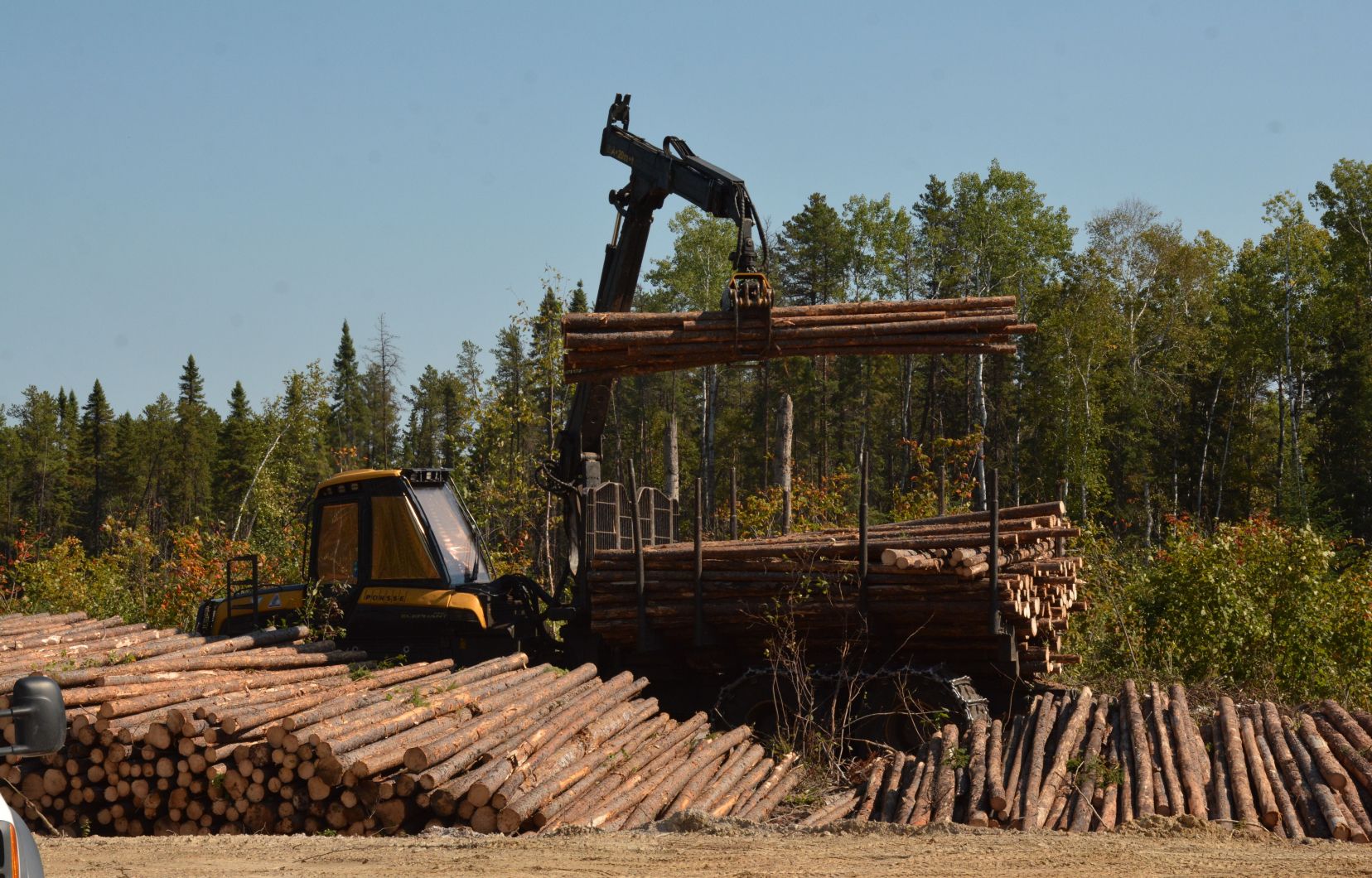This text is taken from the Courrier de l’économie. To subscribe, click here.
The area of cut forests tends to shrink from one year to the next in Quebec, a consequence of forest fires and caribou protection, among other things. While Quebec’s forest regime is set to change soon, loggers in Lac-Saint-Jean are already competing in ingenuity to “garden” the boreal forest.
Harvesting dead wood
Up to 20% of the wood cut in the forest ends up abandoned on the ground. The countless dead trunks were worthless to foresters, who left this wood to rot on site until very recently. A pilot project to harvest all this dead wood in order to convert it into energy began this year thanks to the team from the Integrated Resource Management Agency (AGIR), based in the town of Normandin, in Lac-Saint-Jean.
“What will help us make our operations profitable is to get everything we can out of the forest,” summarizes Michel Bouchard, who heads this non-profit organization. “We will be the last to lose our jobs, because several companies need our products.”
Burning dead wood or bark to fuel thermal power plants was still a rare practice in Quebec a few years ago. Today, wood “cogeneration” is becoming a standard for producing electricity locally. This summer, the Attikameks of Opitciwan began building such a plant to be able to process these residues themselves.
Essential oils
Just across from the Résolu sawmill in Girardville, still in Lac-Saint-Jean, hides a small warehouse where the smell of fir saturates the air. Dozens of barrels of essential oils are stacked here in Enrico Lavoie’s offices.
His company, Labrador Production, is busy heating the “tops”, that is to say the cone of needles at the top of the trees, to extract the essences.
Balsam fir, black spruce, jack pine… all sorts of conifers lend themselves to the formula. While he generally pays foresters like Michel Bouchard to supply himself, the entrepreneur goes so far as to collect the cedar tops himself from ecocentres to remove the saps.
The wood here makes a “loop,” he explains. After processing, the oil-drained treetops are added to the mixture of dead wood and bark to produce energy… which will be used to heat the still-fresh treetops.
Cosmeticians and pharmacologists are buying these essences at a premium on world markets, Mr. Lavoie maintains. So much so that the young Jeannoise company was sold earlier this year to a French company.
Practice “thinnings”
The sight of a forest razed in one fell swoop is distressing, according to the forestry workers interviewed by Le Devoir. In order to delay this fateful step, the AGIR team is officially testing “commercial thinning” for the first time this year. Unlike full-blown felling, only a third of the forest is felled using a machine with a 40-metre arm.
The clearings thus created allow the rest of the trees to grow better. According to initial calculations, maintaining the forest cover in this way would allow 30% more wood to be harvested per hectare.
Drones for reforestation
Abandoned stump fields without any reforestation are proliferating across Quebec. Added to this are the thousands of square kilometres burned by forest fires that will not grow back by themselves.
Drones are coming to the rescue of these devastated landscapes. The Quebec company Forair in partnership with Flash Forest estimates that it can plant up to 50,000 trees per day with its technology for dropping seeds from the air. In comparison, human planters only manage to plant a maximum of 5,000 seedlings per day.
A very first square kilometer was reforested by drone this summer in the Chibougamau area. In three days, nearly 115,000 trees were planted where no tree would have taken root for perhaps 100 years, explains Forair president William Métivier. “We reforest with capsules, and each capsule contains one or two seeds that will allow a tree to grow.”
Local forests
The local forest is an “administrative tinkering” that allows Quebec to delegate cutting plans to a municipal organization or an indigenous community, explains Luc Simard, prefect of the MRC of Maria-Chapdelaine, where all the municipalities live near or far from the forest.
Only one woodland in Abitibi currently benefits from these more flexible regulations. Several forests in Lac-Saint-Jean could benefit from local management of the resource, according to Mr. Simard. “We will not destroy the territory, we live in this territory,” he emphasizes. “We do not want to harvest wood, we want to manage the territory.”
This story is supported by the Local Journalism Initiative, funded by the Government of Canada.
